第151章 CHAPTER XXI.(5)
There are two species of the Bos Caffer in Abyssinia and Central Africa, which, similar in general appearance, differ in the horns; that which resembles the true Bos Caffer of South Africa has very massive convex horns that unite in front, and completely cover the forehead as with a shield; the other variety has massive, but perfectly flat horns of great breadth, that do not quite unite over the os frontis, although nearly so; the flatness of the horns continues in a rough surface, somewhat resembling the bark of a tree, for about twelve inches; the horns then become round, and curve gracefully inwards, like those of the convex species. Buffaloes are very dangerous and determined animals; but, although more accidents occur in hunting these than any other variety of game, I cannot admit that they are such formidable opponents as the elephant and black rhinoceros; they are so much more numerous than the latter, that they are more frequently encountered: hence the casualties.
A buffalo can always be killed with a No. 10 rifle and six drachms of powder when charging, if the hunter will only wait coolly until it is so close that he cannot miss the forehead; but the same rifle will fail against an African elephant, or a black rhinoceros, as the horns of the latter animal effectually protect the brain from a front shot. I have killed some hundreds of buffaloes, and, although in many cases they have been unpleasantly near, the rifle has always won the day. There cannot be a more convenient size than No. 10 for a double rifle, for large game. This will throw a conical projectile of three ounces, with seven drachms of powder. Although a breechloader is a luxury, I would not have more than a pair of such rifles in an expedition in a wild country, as they would require more care in a damp climate than the servants would be likely to bestow upon them, and the ammunition would be a great drawback. This should be divided into packets of ten cartridges each, which should be rolled up in flannel and hermetically sealed in separate tin canisters. Thus arranged, they would be impervious to damp, and might be carried conveniently. But I should decidedly provide myself with four double-barrelled muzzle-loading No. 10's as my regular battery; that, if first class, would never get out of order. Nothing gives such confidence to the gun-bearers as the fact of their rifles being good slayers, and they quickly learn to take a pride in their weapons, and to strive in the race to hand the spare rifles. Dust storms, such as I have constantly witnessed in Africa, would be terrible enemies to breech-loaders, as the hard sand, by grating in the joints, would wear away the metal, and destroy the exactness of the fittings.
A small handy double rifle, such as my little Fletcher 24, not exceeding eight pounds and a half, is very necessary, as it should seldom be out of the hand. Such a rifle should be a breech-loader, as the advantage of loading quickly while on horseback is incalculable. Hunting-knives should be of soft steel, similar to butchers' knives; but one principal knife to be worn daily should be of harder steel, with the back of the blade roughed and case-hardened like a butcher's steel, for sharpening other knives when required.
All boxes for rough travelling should be made of strong metal, japanned. These are a great comfort, as they are proof both against insects and weather, and can be towed with their contents across a river.
Travelling is now so generally understood, that it is hardly necessary to give any instructions for the exploration of wild countries; but a few hints may be acceptable upon points that, although not absolutely essential, tend much to the comfort of the traveller. A couple of large carriage umbrellas with double lining, with small rings fixed to the extremities of the ribs, and a spike similar to that of a fishing-rod to screw into the handle, will form an instantaneous shelter from sun or rain during a halt on the march, as a few strings from the rings will secure it from the wind, if pegged to the ground. Waterproof calico sheeting should be taken in large quantities, and a tarpaulin to protect the baggage during the night's bivouac. No vulcanised India-rubber should be employed in tropical climates;it rots, and becomes useless. A quart syringe for injecting brine into fresh meat is very necessary. In hot climates, the centre of the joint will decompose before the salt can penetrate to the interior, but an injecting syringe will thoroughly preserve the meat in a few minutes. A few powerful fox-traps are useful for catching night-game in countries where there is no large game for the rifle: also wire is useful for making springs.
Several sticks of Indian-ink are convenient, as sufficient can be rubbed up in a few moments to write up the note-book during the march. All journals and note-books should be of tinted paper, green, as the glare of white paper in the intense sunlight of the open sky is most trying to the eyes. Burning glasses and flint and steels are very necessary. Lucifer matches are dangerous, as they may ignite and destroy your baggage in dry weather, and become utterly useless in the damp.
A large supply of quicksilver should be taken for the admixture with lead for hardening bullets, in addition to that required for the artificial horizon; the effect of this metal is far greater than a mixture of tin, as the specific gravity of the bullet is increased.